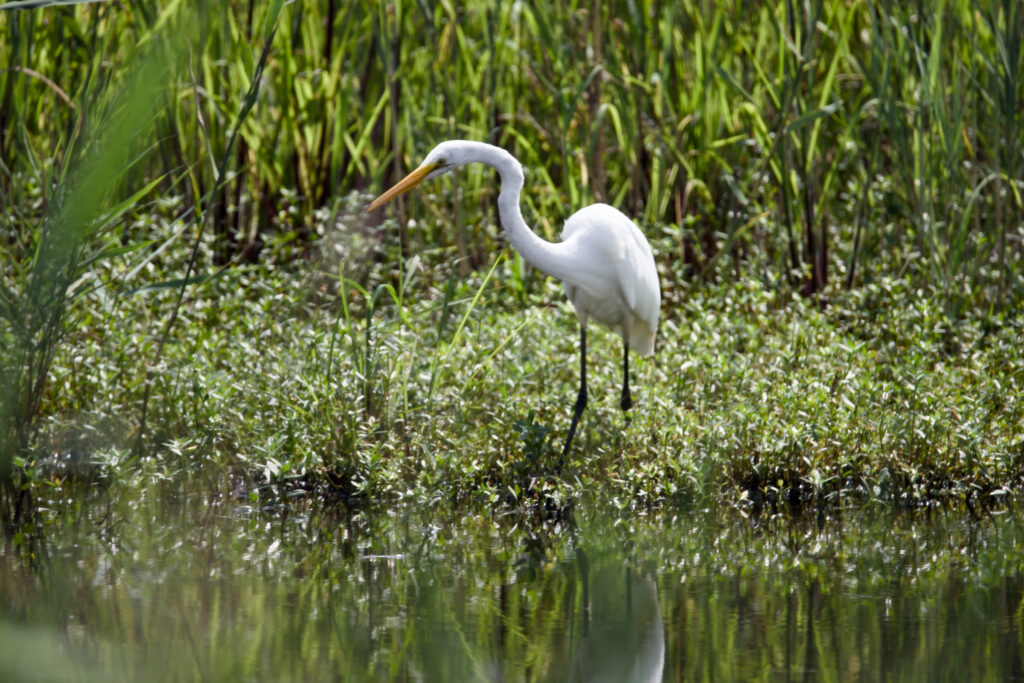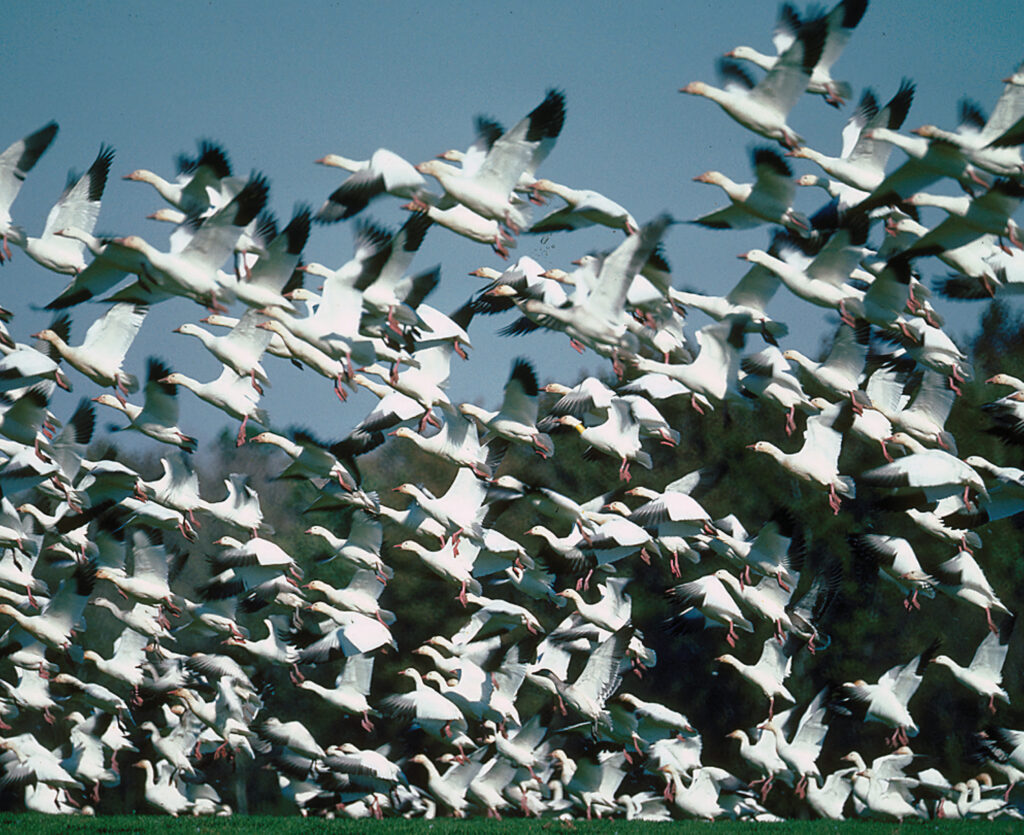Tucked away in the northeast corner of North Carolina, it’s not easy getting to Mackay Island National Wildlife Refuge. Worth the effort, certainly, but it does take some effort.
Coming from the Outer Banks, the choice is a half-hour ferry ride from Currituck on the mainland or drive to Virginia and use GPS, Siri, or something similar to navigate the twists and turns to get to the north end of the refuge.
The ferry, which is free, is the most convenient, and crossing the Currituck Sound by boat is relaxing.
The refuge covers the entire western side of Knotts Island. It’s a little over 8200 acres, almost all of it in North Carolina, although a small inaccessible piece is in Virginia.

Mackay Island Road off NC615 is the main access to the refuge. Look for the Mackay Island sign on the west side of the road. The road is packed gravel, suitable for any car. After passing through a dense forest and some open fields, the seemingly endless marsh of the refuge spreads out to the horizon.
The roads of the refuge serve as the trails. Because of that, they are easily walked, although some of the loops the roads make can create hikes up to five miles in length. It’s also a good idea to check on closures. Most of the impoundments and a number of trails, for example, are closed from mid-October to mid-March to permit waterfowl an undisturbed environment.
On the north end of the refuge along Marsh Highway, NC615, there is the Great Marsh Trail, a .35-mile trail that is very easily walked and is suitable for all ages. A little farther north is the Charles Kuralt Trail, which is a road trail linking eleven national wildlife refuges in Virginia and North Carolina. The view from the platform looks across North Bay and is worth a visit.
The dominant features of the refuge are the marsh, swamp grass, and reeds. Isolated pockets of pine forest and shrub growth have taken root on pocosin or where there is enough raised land for trees to grow.
It seems a stark and harsh environment, yet there is beauty in the grasses and trees, creating subtle shades of brown and green.
Wading birds are common here. Where the swamp gives way to open water, blue heron wade looking for a meal. A great egret glides over the waters, its flight appears effortless, almost lazy.

There’s a copse of trees with a huge nest in a pine tree, the size and complexity of it leaving no doubt it is an eagle’s nest.
An American Kestrel is perched in a tree beside the road. A beautiful colorful bird, it is the smallest North American falcon.
As impressive as it may be in the spring and summer to discover the wildlife living at Mackay Island, it is in the fall, when migratory waterfowl by the tens of thousands fill the waters of the refuge that brings birders from around the world.
Attracted by the abundant subaquatic vegetation and grasses of the marsh, snow geese, green teal, mallards, and wigeons fill the waters. The air is filled with the honking of geese and ducks.

Although isolated and somewhat remote, it is here at Mackay Island where migratory waterfowl have been wintering for millennia. Before the first European explorer set foot on the North American continent, Native American hunters came to these shores to harvest waterfowl for their tribes and nations.
And it is here that the concept of Ducks Unlimited was born.
In 1918 Joseph Knapp bought 7000 acres of marsh and forest on the north end of Knotts Island—Mackay Island as it was known then and is still known.
Knapp owned a publishing empire that included encyclopedias, newspaper inserts, some of the most popular magazines of their time, and books. Extraordinarily wealthy, he fell in love with Currituck County and Knotts Island, almost singlehandedly supporting the county’s school system in the 1920s and 1930s.
He was also an ardent hunter and outdoorsman, and by the 1920s, it was apparent the migratory waterfowl numbers were dwindling.
With some friends, Knapp founded More Game Birds, an organization dedicated to applying science to explain why migratory waterfowl were no longer as prevalent as they once had been. Some of the organization’s proposals were considered radical when suggested. They were the first to undertake a census of migratory waterfowl, using among other techniques, airplanes.
The census underscored the gravity of the problem. By modern standards, the 1935 census was limited in scope; nonetheless, even expanding the findings to include the East and West Coast that were not included, at most, the count was 10% of the 2024 USFW estimated 34 million ducks in the US.
It was also apparent that an international effort was needed and that the organization would have to operate in Canada. The consensus was the word duck had to be in the name—the problem was in Canada a nonprofit had to legally be a limited corporation and Ducks Limited was not the message they wanted.
Someone suggested Ducks Unlimited and the name stuck.
Since 1937, Ducks Unlimited has been active and fairly successful in preserving and restoring wetlands and habitats for migratory waterfowl.
Knots Island is indeed an island. It is generally a farming community, although some residents commute to jobs in the Hampton Roads area. There is only one grocery store on the island, which is also the only gas station. The store has a deli and it should be noted the sandwiches are not bad at all.

